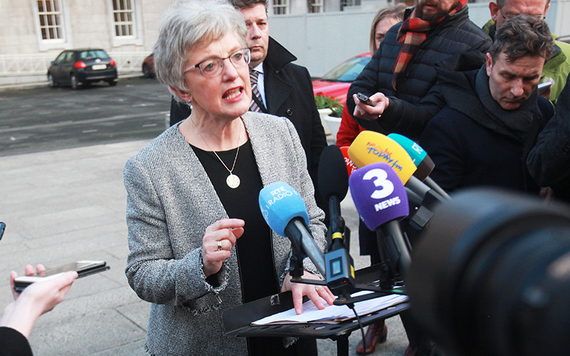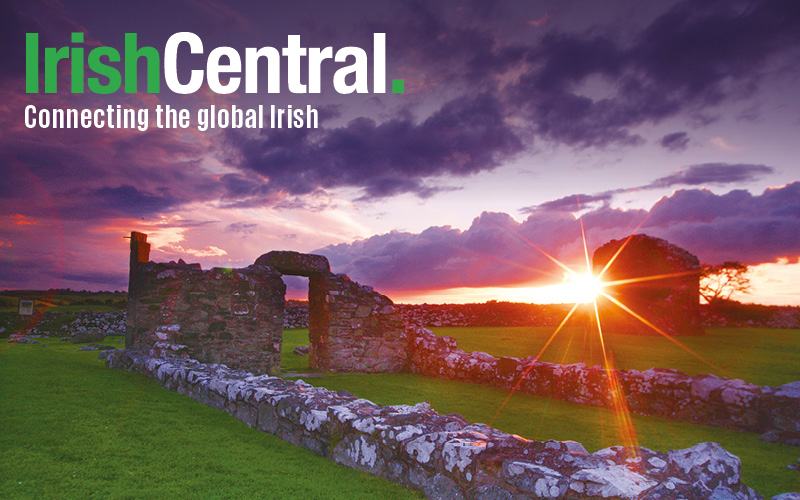An Irish government expert group revealed that it may be impossible to identify the remains of the 796 babies and children buried at the site of Tuam Mother and Babies Home.
The remains of the 796 babies and children believed to buried anonymously on the site of the Bon Secours Mother and Baby Home in Tuam, Co. Galway, may never be identified, according to a new technical report.
Irish Minister for Children and Youth Affairs Katherine Zappone confirmed that an expert group set up by the Irish government believes that it would be next to impossible to carry out accurate DNA testing on the remains, which were found in what appeared to be a disused sewage system on the site earlier this year. This is despite the government's claim that “money is not an issue” when it comes to adequately dealing with the site and those buried there. Relatives have previously strongly urged the minister to ensure the remains are identified.
Minister Zappone was also forced to apologize to the relatives of those children who had died in the home, as well as those who lived there, for the media leak which saw the Irish Times publish a story on the difficulties in identifying the remains on Tuesday morning, hours before the report was made public by the minister herself.
Read more: Tuam dead babies scandal is only the tip of the iceberg

Irish Minister for Children and Youth Affairs Katherine Zappone. Image: RollingNews.ie.
The minister said that she was “disappointed beyond words” that the contents of the report had “found its way into the media.”
“This goes against my promise to the survivors and families that I would inform them of developments in advance of information entering the public domain,” she continued.
The report released by the expert group on Tuesday set out five option for what would possibly happen at the Bon Secours site. The Expert Technical Group presented the list of options as the best option for the remains to be recovered or the best way to deal with the site.
While stating that it was an option to attempt to identity the remains, the report also noted that “the impossibility of achieving positive DNA identification of infants and young juveniles without samples from living relatives.”
Read more: Irish Diaspora Minister slams “shameful rewriting of Tuam babies tragedy” at Notre Dame

Will the remains at Tuam Mother and Baby Home ever be identified. Image: RollingNews.ie.
Even if the DNA of relatives was available, “identification will be extremely difficult, and will depend on the quality of the remains recovered.” This is because teeth are the best means by which to gain a DNA sample but as the remains at the site are aged between 35 weeks old and two to three years old, the teeth had not developed properly to provide an adequate sample.
Speaking to RTÉ News at One, Minister Zappone talked through the five options contained in the report.
“They range from the first one being that no further investigative work will happen to the site in Tuam, that the site will be returned to Galway County Council and turned into a memorial, and that people can decide what kind of memorial they want,” she said.
Others would include exhuming the human remains there to have them re-interred elsewhere or making efforts to fully identify the remains. The minister added that there was additional difficulty with this approach, particularly with this site, as the remains were “mixed together.”

A government expert groups does not believe the remains at Tuam will ever be identified.
Read more: Ireland of the sorrows - the shame of the mother and baby home woes
“I want to ensure that whatever action is taken respects the memory and dignity of those who are buried there and takes account of the concerns and wishes of all who are affected, whether as former residents of the home, relatives of those who may be buried there, or as local residents who live near the site,” she continued, adding that families must be aware that remains can sometimes be destroyed during the identification process.
“I know from experience that an informed debate does not necessarily make difficult decisions any easier,” Zappone stated. The costs range involved in the various options is expected to fall between $117,000 and $5.9 million (€100,000 and €5 million).
In March of this year, the Commission of Investigation into Mother and Baby Homes found “significant” evidence of the remains of hundreds of children at the Bon Secours Mother and Baby Home in Tuam.
The Commission was set up in February 2015 after the tireless work of local historian Catherine Corless revealed the death certificates for 796 children in the home whose burial place could not be accounted for.

Catherine Corless was the tireless leader in revealing the Tuam home scandal. Image: RollingNews.ie
The expert group is due to deliver its full report on the 14 former homes, including Tuam, in February 2018. The investigation has now been allowed a further year to complete its research and interviews, with a further 200 people having applied to speak to the committee about their own experience.
A final decision will be made by the Government regarding the future of the Tuam home in the next three months.
What do you think should happen with the Tuam site? Should it be fully excavated or become a memorial?




Comments